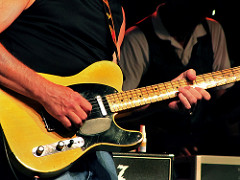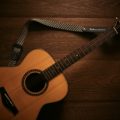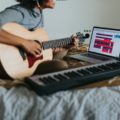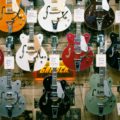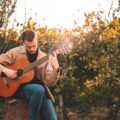Learning guitar Learn Novice Guitar - There are only a few ways to learn how to play the novice guitar. Fortunately, there is a new and improved method that allows beginners to learn faster and have more fun in the process. This method involves using specially designed software. Novice Guitar Learning novice guitar involves more than just notes and chords. The… chords can be challenging for beginners, but everyone has to start somewhere. Here are three simple chords to begin with:
The first basic guitar chord is the C chord, also known as the C Major Chord. Like most basic chords, the C chord is relatively easy to play.
Simply place your third finger on the 5th string, 3rd fret; position your second finger on the 4th string, 2nd fret; and your first finger on the 2nd string, 1st fret.
When strumming the chord, be careful not to play the 6th string. Make sure you are only strumming strings 5 through 1.
The next basic chord is the D chord, also known as the D Major Chord. Initially, you may find it challenging to get comfortable playing this chord as it requires cramming the fingers into a small space on the fretboard.
Keep in mind that developing comfort is important in order to learn to play more advanced chords later on.
To play the D chord, place your first finger on the 3rd string, 2nd fret; then position your third finger on the 2nd string, 3rd fret; and finally, place your second finger on the 1st string, 2nd fret. When playing the D Major chord, only strum the bottom 4 strings.
Lastly, the final important guitar chord is the G Major chord or G chord. This chord may be the most difficult to learn and progress from, but once you get used to it, it can become one of your favorite chords to experiment with.
Place your second finger on the 6th string, 2nd fret; then place your first finger on the 5th string, 2nd fret; and finally, position your third finger on the 1st string, 3rd fret.
When strumming the G chord, include all six strings. To ensure the quality of the chord, strum each string individually to make sure they all sound clear.
Make sure your fingertips are not muting or touching other strings, as it can interfere with the sound. Now, practice transitioning from a G chord to a D chord and then to a C chord in different patterns to improve your speed, technique, and coordination.
Manuel Marino is a seasoned Senior Producer, Music Composer, and Artist with over a decade of experience. He specializes in branded entertainment across various mediums, including video games, films, and advertising campaigns. With 20+ years as a game music composer, Manuel has worked on numerous platforms, creating diverse orchestral soundtracks. HIRE ME


 Manuel is a passionate, driven, and techsavvy AV technician,
Manuel is a passionate, driven, and techsavvy AV technician, 